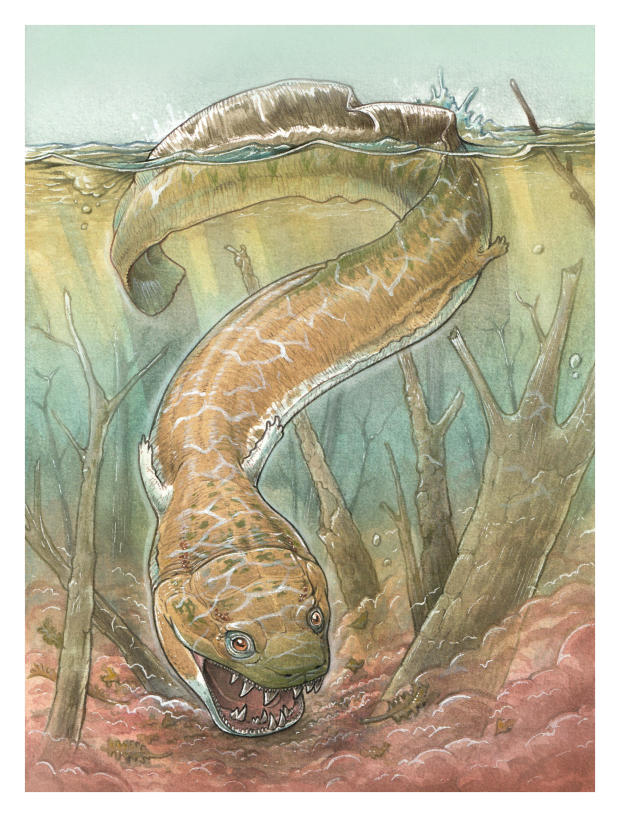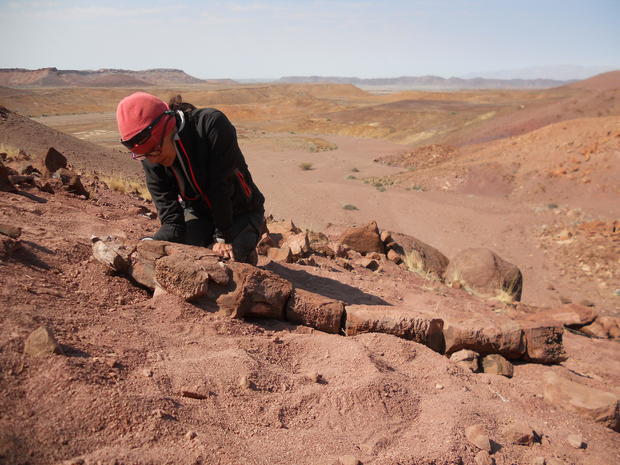Giant salamander-like predator with fangs existed 40 million years before dinosaurs, research reveals
Scientists have revealed fossils of a giant salamander-like beast with sharp fangs that ruled waters before the first dinosaurs arrived. The animal, researchers say, is roughly 272-million-year-old.
The findings were published Wednesday in the journal Nature. The researchers dubbed the species Gaiasia jennyae, an hommage to Gai-as Formation in Namibia, where the fossil was found, and to Jenny Clack, a paleontologist who studied how vertebrates moved from water to land.
"Gaiasia jennyae was considerably larger than a person, and it probably hung out near the bottom of swamps and lakes," said Jason Pardo, an NSF postdoctoral fellow at the Field Museum in Chicago and the co-lead author of the study, in a news release.

Pardo added that the species had a "big, flat, toilet seat-shaped head," "huge fangs" and "giant teeth."
The predator likely used its wide, flat head and front teeth to suck in and chomp unsuspecting prey, researchers said. Its skull was about 2 feet (60 centimeters) long.
"It's acting like an aggressive stapler," said Michael Coates, a biologist at the University of Chicago who was not involved with the work.
Fossil remnants of four creatures collected about a decade ago were analyzed in the Nature study, including a partial skull and backbone. The creature existed some 40 million years before dinosaurs evolved.

While Gaiasia jennyae was an aquatic animal, it could move on land, albeit slowly. The species belonged to a superclass of animals called tetrapods: four-legged vertebrates that clambered onto land with fingers instead of fins and evolved to amphibians, birds and mammals including humans.
Most early tetrapod fossils hail from hot, prehistoric coal swamps along the equator in what's now North America and Europe. But these latest remnants, dating back to about 280 million years ago, were found in modern-day Namibia, an area in Africa that was once encrusted with glaciers and ice.
The discovery of Gaiasia was a big victory for paleontologists who continue to piece together how the world was evolving during the Permian period.
"The fact that we found Gaiasia in the far south tells us that there was a flourishing ecosystem that could support these very large predators," said Pardo. "The more we look, we might find more answers about these major animal groups that we care about, like the ancestors of mammals and modern reptiles."
- In:
- Africa
- Science
- Fossil
Disclaimer: The copyright of this article belongs to the original author. Reposting this article is solely for the purpose of information dissemination and does not constitute any investment advice. If there is any infringement, please contact us immediately. We will make corrections or deletions as necessary. Thank you.
Title:Giant salamander-like predator with fangs existed 40 million years before dinosaurs, research reveals
Url:https://www.investsfocus.com









